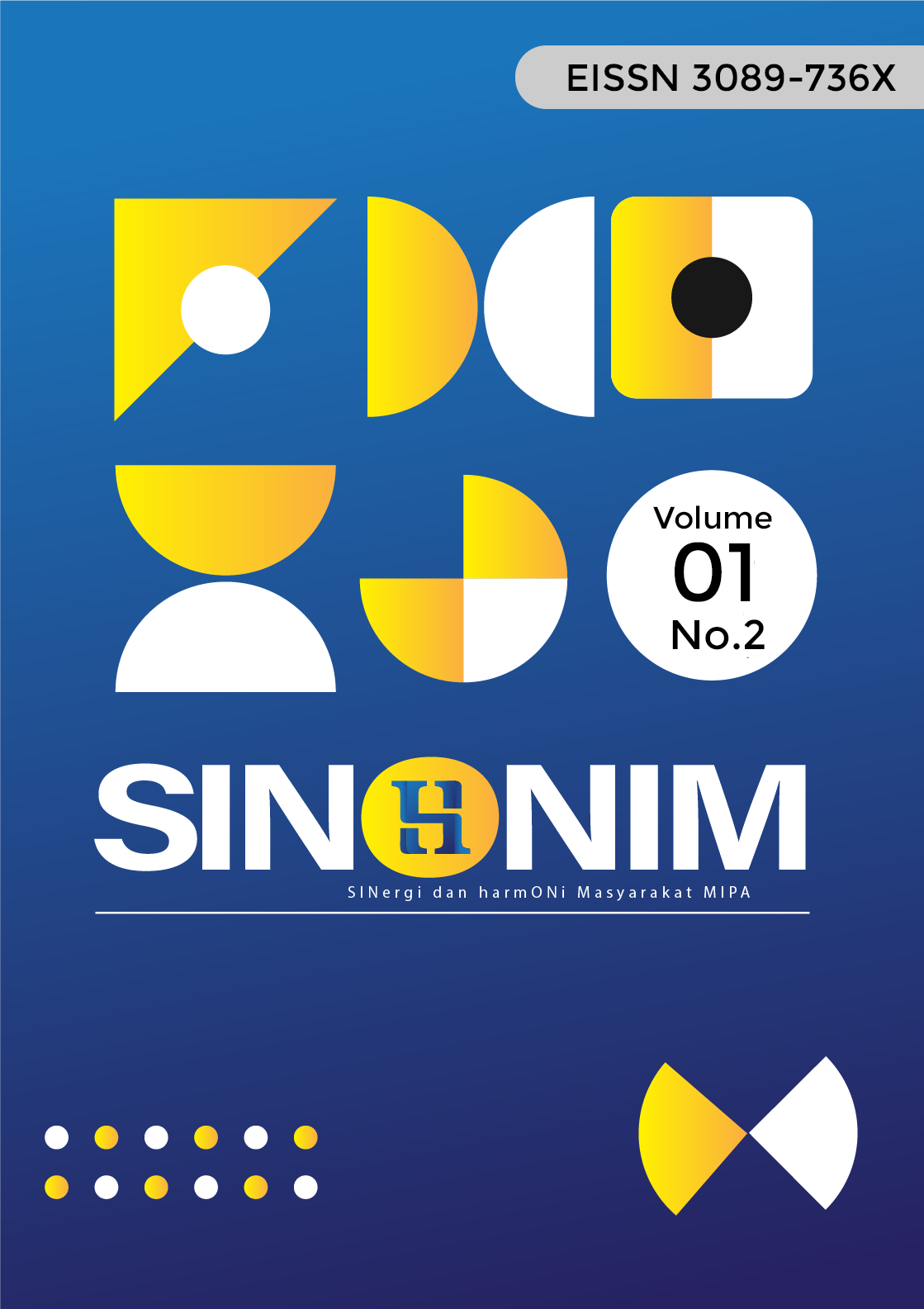Sosialisasi Analisis Kualitas Lingkungan Berdasarkan Bioindikator yang ada di Lingkungan Sekitar
DOI:
https://doi.org/10.29303/sinonim.v1i2.6630Keywords:
Comunity sevice, Environmental quality, BioindicatorAbstract
A healthy and sustainable environment is critical for sustaining ecological balance and increasing human well-being. However, other human activities, such as industrialization, urbanization, and the use of chemicals in agriculture, can have a negative impact on the environment. As a result, the community requires an effective and simple way for integrating their surroundings. Bioindicator-based analysis is one approach of assessing environmental quality. Bioindicators are creatures whose presence, quantity, or physical condition can reflect the state of their surroundings. Plankton, macrozobenthos, moss, lichen, soil insects, and other microorganisms are examples of bioindicators. This community service project seeks to raise public awareness of the significance of bioindicators in environmental quality assessment, as well as how to identify the many types of bioindicators found in the surrounding environment and how to utilize them to assess air, soil, and air quality. The community service activity is divided into three stages: preparation (site survey and activity needs, permissions), implementation (socialization and poster exhibition), and assessment (participants completing questionnaires). The community service activity ran successfully. Throughout the socialization activities, all participants were engaged and eager. The material supplied was fresh to the participants and would be fascinating to examine further. Furthermore, participants were interested in attempting to determine environmental quality by observing the presence of bioindicators around them. Socialization activities were also able to instill in participants a sense of awareness and concern for environmental changes, prompting them to take an active role in sustaining the ecosystem in their surrounds.
References
Andriani, L. F., Rahadian, R., & Hadi, M. (2013). STRUKTUR KOMUNITAS MESOFAUNA TANAH DAN KAPASITAS INFILTRASI AIR SETELAH DIBERI PERLAKUAN BIOSTARTER PENGURAI BAHAN ORGANIK. Bioma: Berkala Ilmiah Biologi, 15(2), 81-89.
Aryawati, R., Ulqodry, T. Z., & Surbakti, H. (2021). FITOPLANKTON SEBAGAI BIOINDIKATOR PENCEMARAN ORGANIK DI PERAIRAN SUNGAI MUSI BAGIAN HILIR SUMATRA SELATAN. Jurnal Ilmu dan Teknologi Kelautan Tropis, 13(1), 163-171.
Ernawati, E., Rohyani, I. S., Ardi, R. H., Wahyuningsih, A. F., Muflihah, B. H. T., & Zubair, R. A. (2023). MACROZOBENTHOS DIVERSITY AS A BIOINDIKATOR OF WATER QUALITY IN RIVER SESAOT VILLAGE NARMADA WEST LOMBOK. Jurnal Biologi Tropis, 23(2), 543-550.
Fandani et al. (2019) Fandani, S. T., Sulistiyowati, H., & Setiawan, R. (2019). TINGKAT PENCEMARAN UDARA DI DESA SILO DAN PACE, KECAMATAN SILO, KABUPATEN JEMBER, DENGAN MENGGUNAKAN LICHEN SEBAGAI INDIKATOR. E-Jurnal UNEJ, 39 – 42.
Firmansyah, N., Ihsan, Y. N., & Yuliadi, L. P. (2016). DINAMIKA NUTRIEN DENGAN SEBARAN MAKROZOOBENTHOS DI LAGUNA SAGARA ANAKAN. Jurnal Perikanan Kelautan, 7(2). 45 – 50.
Haneda, N. F., & Sirait, B. A. (2012). KEANEKARAGAMAN FAUNA TANAH DAN PERANANNYA TERHADAP LAJU DEKOMPOSISI SERASAH KELAPA SAWIT (Elaeis guineensis Jacq). Jurnal silvikultur tropika, 3(3), 161-167.
Isrowati, I., Rohyani, I. S., Ernawati, E., Akbar, C. A., Wahyuni, E. D., & Purnamasari, W. (2023). KEANEKARAGAMAN LUMUT SEBAGAI BIOINDIKATOR KUALITAS UDARA DI KAWASAN TAMAN WISATA ALAM SURANADI DAN RUANG TREBUKA HIJAU UDAYANA. Jurnal Sains Teknologi & Lingkungan, 9(2), 318-327.
Lukitasari, M. (2019). MENGENAL TUMBUHAN LUMUT (Bryophyta): DESKRIPSI, KLASIFIKASI, POTENSI DAN CARA MEMPELAJARINYA, Magetan, Media Grafika.
Mahapatra, B., Dhal, N. K., Dash, A. K., Panda, B. P., Panigrahi, K. C. S., & Pradhan, A. (2019). PERSPECTIVE OF MITIGATING ATMOSPHERIC HEAVY METAL POLLUTION: USING MOSSES AS BIOMONITORING AND INDICATOR ORGANISM. Environmental Science and Pollution Research, 26(29), 29620-29638.
Putri, K., Santi, R., & Aini, S. N. (2019). KEANEKARAGAMAN COLLEMBOLA DAN SERANGGA TANAH DI BERBAGAI UMUR PERKEBUNAN KELAPA SAWIT (Elaeis Guineensis Jacq.). Jurnal Ilmu Tanah dan Lingkungan, 21(1), 37-41.
Sundaravarman, K., Varadharajan, D., Babu, A., Saravanakumar, A., Vijayalakshmi, S., & Balasubramanian, T. (2012). A STUDY OF A MARINE BENTHIC FAUNA WITH SPECIAL REFERENCE TO THE ENVIRONMENTAL PARAMETERS, SOUTH EAST COAST OF INDIA. Intl J Pharm Biol Arch, 3(5), 1157-1169.
Downloads
Published
Issue
Section
License
Copyright (c) 2025 Ernawati Ernawati, Immy Suci Rohyani, Ahmad Jupri, Isrowati Isrowati, Rachmawati Noviana Rahayu, Reda Reda

This work is licensed under a Creative Commons Attribution-ShareAlike 4.0 International License.






